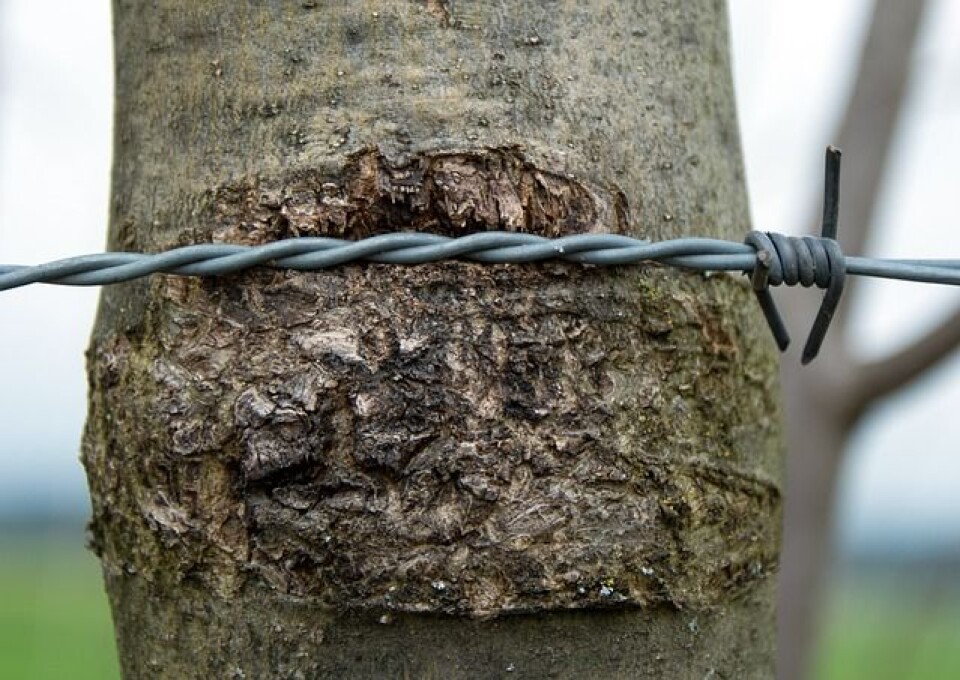War aftermaths - How persistent inflammation destroys our organs
Denne artikkelen er over ti år gammel og kan inneholde utdatert informasjon.

Av: Monika Kasprzycka, forsker ved avdeling for patologi
When we are hurt, we heal. When our body suffers injury, it activates a process of so called wound healing to protect its integrity. The same process that happens when we cut our finger with a knife while chopping food, happens also in our internal organs when they get injured by for example trauma or toxins. For example overconsumption of alcohol leads to liver injury,or exposure to asbestos can cause lung injury.
After first stopping the bleeding by forming a clot, our body starts to fight potential threats from pathogens that could enter through the injured area by activating the immune system
The cells in our body are embedded in extracellular matrix – a substance that provides structural support to the surrounding cells. After the threat of infection is reduced, the wound is temporary filled with extracellular matrix that, if everything goes well, is later replaced by cells.
…but sometimes things go terribly wrong
Sometimes when the process is not regulated properly, extracellular matrix continues to deposit, slowly replacing cells and inevitably leading to loss of function by the affected organ. This process is called scarring or fibrosis.
Fibrosis is a serious problem in modern medicine as it highly contributes to loss of an organ function in end stage diseases of the liver, heart, lungs or kidneys. That could eventually lead to organ transplantation.
Moreover, most transplanted organs are in long terms lost in large part due to fibrosis. It is roughly estimated that almost half of the kidney transplants are lost in 10 years.
Collateral damage and consequences
So what can possibly go wrong in the wound healing process that changes it from being necessary and beneficial for us to be a threat to our lives?
Inflammation can be part of the problem.
When our immune system eliminates threats it can also damage innocent bystanders – our cells, and this starts the wound healing process. This way, a continuous inflammation leads to constant activation of cells responsible for extracellular matrix production and eventually to fibrosis.
The war that never ends
Immune cells are often compared to an army. Let us continue with this analogy. Consider inflammation after injury as a war. If the process progress properly; there is destruction, but conflict ends eventually.
But what if the threat, or what the fighting country perceives as the threat, cannot be eliminated. Conflict continues, even if it never reaches its acute or hot phase, and more and more innocent bystanders are accidentally attacked, and destruction does not stop. Similarly, if the stimulus that started the inflammatory process is still present – for example if the organism is constantly exposed to toxin or transplanted organ is recognized as foreign - the response to injury will continue, and with it, overproduction of extracellular matrix.
The destructive aftermaths of the war
But what if a war is won but the army is not demobilized correctly. Unpaid mercenaries and demoralized veterans can be as disastrous for country as enemy forces. The same happens in our body if the inflammatory cells are not effectively eliminated, they will further exacerbate the organ damaging response, leading to fibrosis.
Even a won but poorly resolved war leads to further suffering and destruction, changing a country into a ruined inhabitable wasteland. The same goes for a poorly resolved inflammation, even if threat of infection is eliminated, the organ is changed into dysfunctional mass of extracellular matrix inhabitable for cells.
We will never capitulate!
Unfortunately, our ways to stop and treat fibrosis are still very limited. But as we recognize now, how serious and urgent the problem is posed by poorly resolved inflammation and fibrosis, my colleagues and I, as well as numerous scientists all around world, will continue the search for mechanisms underlying these processes to better understand our enemy. This knowledge will help us to design better diagnostic methods to recognize people who are in danger of developing fibrosis and to invent methods to stop and eliminate it.







